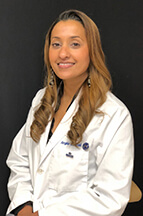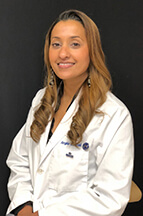
Angie Seelal, RPA-C
Practicing skin awareness is key to making sure that our moles are non-cancerous.
NEW YORK (PRWEB)
October 01, 2019
It’s a real concern: The CDC reports that rates of melanoma – the deadliest form of skin cancer – more than doubled between 1982 and 2011 and continue to rise. “Practicing skin awareness is key to making sure that our moles are non-cancerous,” observes Angie Seelal, a Certified Registered Physician’s Assistant specializing in Dermatology with Advanced Dermatology PC. “Staying alert supports early treatment and peace of mind.”
Moles’ connection with melanoma is due to the role of melanocytes – pigment-producing skin cells. Melanocytes are where melanomas develop. And clusters of melanocytes are what form moles. “However, most moles are harmless,” notes Seelal. “Almost all of us have them. The key to mole safety is keeping track of risk factors and changes in number or appearance.”
While melanomas make up a minority of skin cancer cases, they provoke the most concern because they are the most lethal, forecast to cause more than 7,000 deaths this year in the United States, according to the American Academy of Dermatology (AAD).
“Paramount to successfully treating melanoma is early detection,” explains Seelal. “If it is allowed to progress, it can metastasize and spread to other organs, becoming especially dangerous. On the other hand, early treatment is extremely effective: If we begin before there is any spread to the body’s lymph nodes, the five-year survival rate is 99 percent.”
Moles – medical name “nevi” – fall into two categories: 1. common moles and 2. atypical or “dysplastic” moles. “Most people have between ten and forty common moles,” notes Seelal. “The common moles share certain characteristics: They are round and smooth, with a distinct border. They are small, maxing out at about the size of a pencil eraser. And they are one color: usually pink, tan, or brown. Atypical moles, on the other hand, are larger and may have an irregular color, surface, and/or border.”
“More than 50 common moles and atypical moles are risk factors we need to be aware of,” continues Seelal.
And increasing melanoma awareness remains important: “Half of melanomas are self-detected,” explains Seelal. “The earlier the patient spots it, the better the outcome.”
With that in mind, Seelal offers the following advice:
5 Tips for Mole and Melanoma Safety
1. Use a Body Mole Map for monthly self-checks: “Establish a baseline and then monitor for changes,” advises Seelal. “People can print a Body Mole Map off of the AAD’s web site and use it to diagram moles and other marks. This is an effective reference during monthly self-checks for changes that require medical evaluation.”
2. Learn your A, B, C, D, and Es: “There are five factors to remember during self-exams,” says Seelal. “Asymmetry, or an irregular shape. Border, or an uneven edge. Color – a mix is a concern. Diameter, or a change in size. And evolving or changing over time. Any of these warrants an immediate doctor’s visit.”
3. Monitor more than moles: “Melanomas are not limited to moles,” explains Seelal. “In fact, up to eighty percent occur in other areas. During self-checks, we need to stay alert for all skin changes, including color, texture, itching, bleeding and oozing. If any occurs, it’s time for a trip to the doctor’s.”
4. Schedule regular evaluations: “In addition to many common moles or the presence of atypical moles,” notes Seelal, “genes and environment also elevate melanoma risk. Factors include fair skin, childhood sunburns, and personal or family skin cancer. Those with higher risk should see the dermatologist regularly – as often as every three months for those with a combination of factors.”
5. Practice ‘safe sun’ – all year long: “Summer passes, but the sun still shines,” emphasizes Seelal. “The AAD reports that about only half of U.S. adults regularly stay protected. With ninety-five percent of melanomas linked to UV exposure, we need to get this number higher: use sunscreen, seek shade, and wear protective clothing. And absolutely no indoor tanning.”
“The most common cancer is skin cancer,” concludes Seelal. “But it’s treatable. Practicing skin awareness can help us stay safe and keep calm.”
Bio: Angie Seelal, RPA-C is a Certified Physician Assistant through the National Commission of Certification of Physician Assistants.
Advanced Dermatology P.C. and the Center for Laser and Cosmetic Surgery (New York & New Jersey) is one of the leading dermatology centers in the nation, offering highly experienced physicians in the fields of cosmetic and laser dermatology as well as plastic surgery and state-of-the-art medical technologies. http://www.advanceddermatologypc.com.
Share article on social media or email:

